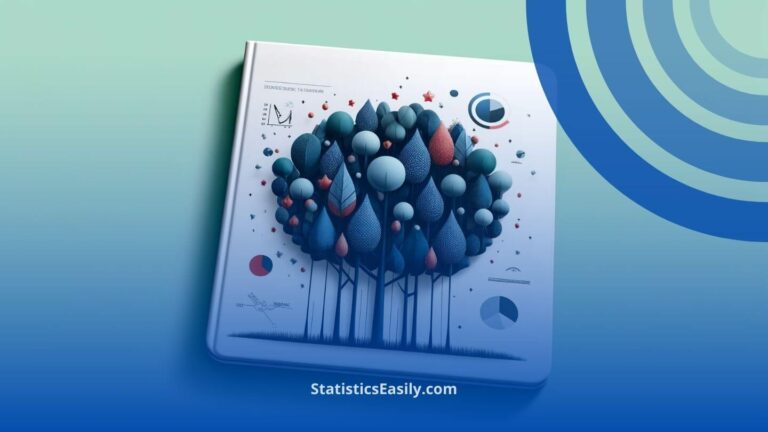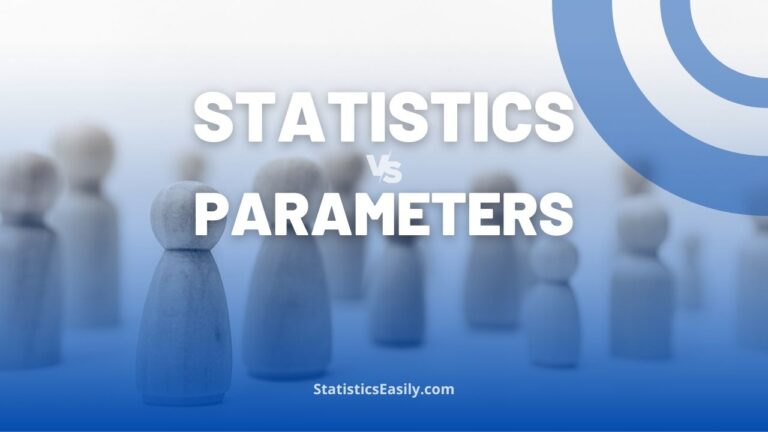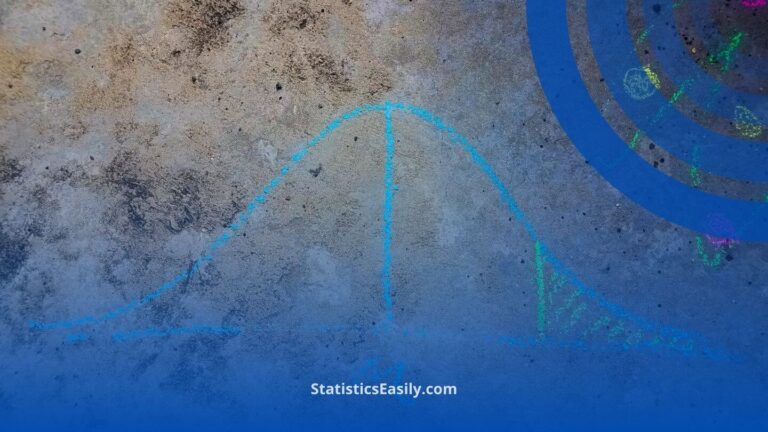Data Cleaning Techniques: A Comprehensive Guide
You will learn the transformative power of Data Cleaning Techniques for achieving unmatched data analysis accuracy and integrity.
Introduction
In the data science landscape, the caliber of data quality cannot be overstated. It underpins the reliability and accuracy of analysis, influencing outcomes and decisions. This article introduces Data Cleaning Techniques, a critical process for enhancing data integrity. Data cleaning involves identifying and correcting inaccuracies, inconsistencies, and redundancies in data, which, if left unchecked, can lead to skewed results and misleading insights. By implementing effective data cleaning methods, data scientists ensure the foundation upon which analysis is performed is both robust and reliable.
Highlights
- Data Validation: Utilizing the assertive package in R ensures unparalleled data consistency.
- Missing Values: Multiple imputation via the mice package significantly boosts data quality.
- Outlier Detection: The outliers package in R is pivotal for maintaining data integrity.
- Data Transformation: Standardization with scale() and normalization with preprocessCore enhance data usability.
- Noise Reduction: The smooth() function is essential for achieving crystal-clear data insights.
Ad Title
Ad description. Lorem ipsum dolor sit amet, consectetur adipiscing elit.
The Philosophy Behind Data Cleaning
Data Cleaning Techniques serve as a procedural necessity and a foundational commitment to truth and integrity within data analysis. This section delves into the philosophical underpinnings that make data cleaning indispensable for deriving accurate and meaningful insights from data.
The essence of data cleaning transcends its operational aspects, rooting itself in the quest for integrity in data analysis. Data integrity is paramount in a discipline that hinges on precision and reliability. Clean data acts as the bedrock of trustworthy analysis, enabling data scientists to unveil insights that are accurate and deeply reflective of the real-world phenomena they aim to represent.
Data Cleaning Techniques are instrumental in this process, offering a systematic approach to identifying and rectifying errors that may compromise data quality. Pursuing clean data is akin to seeking truth in science — both endeavor to illuminate understanding by removing obfuscations that cloud our view of reality.
Furthermore, clean data bolsters the integrity of data analysis, as it ensures the conclusions drawn are based on the most accurate and relevant information available. This enhances the study’s credibility and fortifies the decision-making process it informs, embodying a commitment to excellence and ethical practice in data science.
Comprehensive Overview of Data Cleaning Techniques
Data cleaning is a pivotal aspect of data science, ensuring the accuracy and consistency of datasets. This comprehensive overview explores various data cleaning techniques, supported by practical R code snippets, to guide data scientists in refining their datasets.
Data Validation: Ensuring Accuracy and Consistency
Data validation is the first step in the data-cleaning process. It is crucial for maintaining the integrity of your data. It involves checking for the dataset’s correctness, completeness, and consistency. Using the assertive package in R, data scientists can systematically validate their data, ensuring it meets predefined criteria and standards.
# R Code Snippet for Data Validation using assertive package library(assertive) assert_is_numeric(data$age) assert_all_are_positive(data$income)
Data Validation with assertive Package: assert_is_numeric() checks if the data in a specified column are numeric, helping ensure that numerical operations can be performed without errors. assert_all_are_positive() verifies that all values in a specified column are positive, which is crucial for analyses where negative values are not valid or expected.
Handling Missing Values: Techniques like Imputation and its Significance
Missing values can distort the analysis if not adequately addressed. The mice package in R offers multiple imputation techniques, allowing for the estimation of missing values based on the information in the rest of the dataset.
# R Code Snippet for Handling Missing Values using mice package library(mice) imputed_data <- mice(data, method = 'pmm', m = 5) completed_data <- complete(imputed_data)
Handling Missing Values with mice Package: mice() stands for Multivariate Imputation by Chained Equations. This function performs multiple imputations on missing data in a dataset, creating several complete datasets where missing values are filled in with plausible data points based on the information from the rest of the dataset. After performing multiple imputation with mice(), the complete() function selects one of the completed datasets (or combines them) for analysis.
Outlier Detection: Identifying and Treating Outliers
Outliers can significantly affect the outcomes of data analysis. The R outliers package provides methods to detect and manage these anomalies, ensuring they do not skew the results.
# R Code Snippet for Outlier Detection using outliers package library(outliers) outlier_values <- outlier(data$variable, opposite = TRUE) data$variable[data$variable == outlier_values] <- NA
Outlier Detection with outliers Package: outlier() identifies outliers in a data vector. This function can detect the most extreme value in the data set, which can then be managed to prevent it from skewing the analysis.
Data Transformation: Standardization and Normalization Processes
Data transformation is essential for preparing datasets for analysis, involving standardization and normalization to ensure data from different sources or scales can be compared fairly. The scale function in R can standardize data, while the preprocessCore package offers normalization methods.
# R Code Snippet for Data Transformation # Standardization standardized_data <- scale(data$variable) # Normalization using preprocessCore package library(preprocessCore) normalized_data <- normalize(data$variable)
Data Transformation Functions: scale() standardizes a dataset by centering and scaling the values. This means subtracting the mean and dividing by the standard deviation, which helps compare measurements with different units or ranges. normalize(), part of the preprocessCore package, normalizes data, adjusting the values in a dataset to a common scale without distorting differences in the ranges of values. It is often used in preprocessing data for machine learning.
Noise Reduction: Smoothing and Filtering Methods to Improve Data Quality
Reducing noise in your data helps clarify the signals you wish to analyze. The smooth function in R can apply smoothing techniques, such as moving averages, to your data, enhancing its quality for further analysis.
# R Code Snippet for Noise Reduction using smooth function smoothed_data <- smooth(data$variable, kind = "moving")
Noise Reduction with smooth() Function: smooth() applies a smoothing technique to the data, such as moving averages or other filters, to reduce noise and make the underlying trends more visible. This function is essential for improving the data quality for further analysis, especially in time series data.
Case Studies: Before and After Data Cleaning
Enhancing Epidemic Control through Data Cleaning in Public Health
Background
In public health, tracking and predicting disease outbreaks is crucial for implementing timely and effective control measures. However, public health data is often plagued by inconsistencies, missing values, and outliers, which can obscure the true patterns of disease spread. Recognizing this challenge, a team of researchers refined their analysis of disease outbreak patterns, focusing on influenza as a case study.
Approach
The researchers employed comprehensive data cleaning techniques to prepare the dataset for analysis. The initial step involved identifying and removing outliers — data points significantly different from the rest. These outliers could result from reporting errors or unusual cases that did not represent the general trend of the disease.
The next critical step was to address missing values in the dataset. Missing data is a common issue in public health records, often due to underreporting or delays in data collection. To overcome this, the researchers used multiple imputation techniques that generate plausible values based on the observed data. This method ensured that the analysis was not biased by the absence of data and that the patterns identified reflected the true dynamics of the disease spread.
Findings and Impact
By applying these data-cleaning techniques, the researchers achieved a more precise and accurate view of influenza outbreaks. The cleaned data revealed patterns not apparent before, such as specific regions with higher transmission rates and periods of significant outbreak escalation.
The insights gained from this refined analysis were instrumental in developing more targeted and effective disease control strategies. Public health authorities could allocate resources more efficiently, focusing on high-risk areas and times. Moreover, the predictive models built on the cleaned data allowed for better anticipation of future outbreaks, facilitating preemptive measures to mitigate the impact of the disease.
Reference
This case study is inspired by the work of Yang, W., Karspeck, A., & Shaman, J. (2014) in their article “Comparison of Filtering Methods for the Modeling and Retrospective Forecasting of Influenza Epidemics” published in PLOS Computational Biology. Their research highlights the importance of robust data-cleaning methods in enhancing the modeling and forecasting of influenza epidemics, providing a foundational example of how data cleaning can significantly improve public health analysis and intervention strategies.
Conclusion
This case study underscores the pivotal role of data cleaning in public health, especially in the context of epidemic control. By employing meticulous data cleaning processes, researchers and public health officials can derive more accurate and actionable insights from the available data, leading to more effective disease management and mitigation efforts. The success of this approach in the study of influenza outbreaks serves as a compelling argument for the broader application of data-cleaning techniques in public health research and practice.
Advanced Tools and Technologies for Data Cleaning
The evolution of data cleaning has been significantly propelled by advancements in software and libraries, offering data scientists a variety of powerful tools to ensure data quality. These tools facilitate the efficient identification and correction of inaccuracies, inconsistencies, and redundancies in datasets, which are crucial for reliable data analysis. Below is an overview of some of the leading software and libraries used in data cleaning:
OpenRefine (Formerly Google Refine)
OpenRefine is a robust tool designed for working with messy data, cleaning it, transforming it from one format into another, and extending it with web services and external data. It operates on rows of data and supports various operations to clean and transform this data. Its user-friendly interface allows non-coders to effectively clean data, while its scripting capabilities enable automation for repetitive tasks.
Pandas Library in Python
Pandas is an open-source, BSD-licensed library providing high-performance, easy-to-use data structures and data analysis tools for the Python programming language. It offers extensive functions for data manipulation, including handling missing data, data filtering, cleaning, and transforming. Pandas’ DataFrame object is handy for cleaning and organizing data in tabular form.
R’s dplyr and tidyr
R’s dplyr and tidyr packages are part of the tidyverse, a collection of R packages designed for data science. dplyr provides a grammar for data manipulation, offering a consistent set of verbs that help you solve the most common data manipulation challenges. tidyr helps in tidying your data. Tidy data is crucial for straightforward data cleaning, manipulation, and analysis.
Trifacta Wrangler
Trifacta Wrangler is an interactive tool designed for data cleaning and preparation. Its intuitive interface lets users quickly transform, structure, and clean their data through a point-and-click interface, leveraging machine learning to suggest common transformations and cleaning operations. It’s particularly effective for analysts working with large and complex data sets.
Talend Data Quality
Talend Data Quality provides robust, scalable tools for managing data quality, offering features for profiling, cleansing, matching, and monitoring data quality. It integrates with various data sources, ensuring that data across systems is consistent and accurate. Its graphical interface simplifies the design of data cleaning processes, making it accessible to users without deep programming skills.
SQL-Based Tools
SQL databases often come with built-in functions and procedures for data cleaning. Tools such as SQL Server Integration Services (SSIS) or Oracle Data Integrator provide comprehensive ETL (Extract, Transform, Load) capabilities, including data cleaning functions. These tools are powerful in environments where data is stored in relational databases.
Best Practices for Data Cleaning
Maintaining data cleanliness is an ongoing challenge in the data lifecycle. It is crucial for ensuring the reliability and integrity of data analysis. Implementing strategic approaches and leveraging automation can significantly enhance the efficiency and effectiveness of data-cleaning processes. Here are some best practices and tips for maintaining data cleanliness and automating data cleaning processes.
1. Develop a Data Cleaning Plan
- Understand Your Data: Before cleaning, understand the structure, type, and sources of your data. This knowledge informs the most effective cleaning techniques and tools.
- Define Data Quality Metrics: Establish clear metrics for data quality specific to your project’s needs, including accuracy, completeness, consistency, and timeliness.
2. Standardize Data Entry
- Implement Data Standards: Develop standards for data entry that minimize the chance of errors and inconsistencies. This can include formats for dates, categorizations, and naming conventions.
- Use Validation Rules: Where possible, implement validation rules in data entry forms to catch errors at the source.
3. Regularly Audit Your Data
- Schedule Regular Audits: Periodic audits help identify new issues as they arise. Automating these audits can save time and ensure regular data quality checks.
- Leverage Data Profiling Tools: Use data profiling tools to automatically analyze and uncover patterns, outliers, and anomalies in your data.
4. Employ Automated Cleaning Tools
- Scripted Cleaning Routines: Develop scripts in languages such as Python or R to automate everyday data cleaning tasks like removing duplicates, handling missing values, and correcting formats.
- Machine Learning for Data Cleaning: Explore machine learning models that can learn from data corrections over time, improving the efficiency of data cleaning processes.
5. Document and Monitor Data Cleaning Processes
- Maintain a Data Cleaning Log: Documenting your data cleaning process, including decisions and methodologies, is vital for reproducibility and auditing purposes.
- Monitor Data Quality Over Time: Implement monitoring tools to track data quality over time. Dashboards can visualize data quality metrics, helping to quickly identify trends and issues.
6. Continuous Improvement
- Feedback Loop: Establish a feedback loop with data users to continually gather insights on data quality issues and areas for improvement.
- Stay Updated with New Tools and Techniques: The field of data cleaning is continually evolving. Keep abreast of new tools, libraries, and best practices to refine your data-cleaning processes.
Automation Tools Overview
- OpenRefine: A powerful tool for working with messy data, allowing users to clean, transform, and extend data with ease.
- Pandas: A Python library offering extensive functions for data manipulation, ideal for cleaning and organizing tabular data.
- dplyr and tidyr: Part of the tidyverse in R, these packages provide a grammar for data manipulation and tidying, respectively, facilitating efficient data cleaning.
- Trifacta Wrangler: Offers an interactive interface for cleaning and preparing data, with machine learning to suggest transformations.
- Talend Data Quality: Integrates data quality tools into the data management process, providing scalable solutions for cleaning data across systems.
Implementing these best practices and leveraging advanced tools can significantly improve the quality of your data, ensuring that your analyses are based on reliable and accurate information. Remember, data cleaning is not a one-time task but a critical, ongoing part of the data analysis lifecycle.
The Ethical Considerations in Data Cleaning
In the meticulous data cleaning process, the balance between maintaining data integrity and navigating the ethical implications of data manipulation stands paramount. As data scientists endeavor to refine datasets for analytical precision, ethical considerations must guide every step to ensure that the pursuit of clean data does not inadvertently distort the underlying truth the data seeks to represent.
Ethical Guidelines in Data Cleaning
- Transparency: Maintain transparency about the data cleaning methods employed. This includes documenting all changes made to the original dataset, the rationale behind these changes, and any assumptions made during the cleaning process. Transparency fosters trust and allows for the reproducibility of research findings.
- Accuracy Over Convenience: The temptation to over-clean data, simplifying it to fit preconceived models or hypotheses, must be resisted. While removing outliers or filling missing values, it’s crucial to consider whether these steps enhance the dataset’s accuracy or merely align the data with expected outcomes.
- Respecting Data Integrity: Integrity involves preserving the essence of the original data. Any data cleaning technique should refine data representation without altering its fundamental characteristics or leading to misleading conclusions.
- Informed Consent and Privacy: When cleaning datasets that include personal or sensitive information, it’s vital to consider privacy implications. Anonymizing data to protect individual identities without compromising the dataset’s integrity is a crucial balance to achieve. Furthermore, ensuring that data usage aligns with the consent provided by data subjects is a fundamental ethical requirement.
- Bias Mitigation: Data cleaning processes should be audited for biases that may be introduced inadvertently. This includes being aware of how missing data is imputed and how outliers are treated, ensuring these methods do not perpetuate existing biases or introduce new ones.
Practical Applications of Ethical Data Cleaning
- Collaborative Review: Engage with peers or interdisciplinary teams to review data-cleaning decisions. External audits can provide diverse perspectives and help identify potential ethical oversights.
- Algorithmic Transparency: Utilize data cleaning algorithms and tools that offer clear insights into their operation, allowing users to understand how data is being modified.
- Ethical Training: Data scientists and analysts should receive training in technical skills and the ethical aspects of data manipulation. Understanding the broader impact of their work encourages responsible practices.
Ad Title
Ad description. Lorem ipsum dolor sit amet, consectetur adipiscing elit.
Conclusion
In the intricate tapestry of data science, data cleaning emerges not merely as a technical necessity but as a cornerstone of ethical analysis and decision-making. This guide has journeyed through the multifaceted realm of data-cleaning techniques, underscoring their pivotal role in ensuring data-driven insights’ integrity, accuracy, and reliability. By adhering to best practices, leveraging advanced tools, and navigating the ethical nuances of data manipulation, data scientists and analysts commit to a standard of excellence that upholds the truth and contributes to the collective quest for knowledge. Through such a commitment to ethical practice and methodological rigor, data science’s true potential can be realized, empowering us to interpret the world more accurately and act upon it more wisely.
Recommended Articles
Explore deeper into data science — read our related articles and more to elevate your analytics journey.
- Confidence Interval Calculator: Your Tool for Reliable Statistical Analysis
- Understanding the Assumptions for Chi-Square Test of Independence
- Statistics vs Parameters: A Comprehensive FAQ Guide
- Fisher’s Exact Test: A Comprehensive Guide
- Is PSPP A Free Alternative To SPSS?
Frequently Asked Questions (FAQs)
Q1: What Exactly Are Data Cleaning Techniques? Data cleaning techniques encompass a variety of methods used to enhance data quality. These methods rectify inaccuracies and inconsistencies and fill in missing information, ensuring data sets are both accurate and reliable for analysis.
Q2: Why Is Data Cleaning Considered Critical in Data Analysis? Data cleaning is significant because it ensures the accuracy and reliability of data analysis. Clean data leads to more valid conclusions, positively influencing decision-making and research outcomes.
Q3: Can You Explain How Data Validation Functions? Data validation involves verifying that data meets specified accuracy and consistency standards. This process checks for data correctness, completeness, and conformity, preventing errors and discrepancies in data analysis.
Q4: Could You Elaborate on Multiple Imputation? Multiple Imputation is a statistical technique for handling missing data. Replacing missing values with various sets of simulated values maintains the integrity of data analysis, allowing for more accurate and comprehensive conclusions.
Q5: How Do Outliers Influence Data Analysis? Outliers, which are data points significantly different from others, can distort analytical results, leading to inaccurate conclusions. Identifying and managing outliers is crucial for maintaining the accuracy of data analysis.
Q6: What Role Does Standardization Play in Data Cleaning? Standardization involves adjusting data to a uniform scale, allowing for comparing datasets from different sources or with other units. This process is vital for ensuring consistency and comparability in data analysis.
Q7: Why Is Data Normalization Important in the Data Cleaning Process? Data normalization adjusts numerical columns to a standard scale without altering the range of values, ensuring that the scale of the data does not skew statistical analyses. This process is crucial for accurate data comparison and analysis.
Q8: Can Reducing Noise in Data Enhance Analysis? Yes, reducing or eliminating noise from data sets clarifies the information, enhancing the accuracy and clarity of data analysis. Techniques like smoothing help reveal the true underlying patterns in the data.
Q9: What Are Some Essential Tools for Efficient Data Cleaning? Essential tools for data cleaning include software and libraries such as R packages (assertive, mice, outliers), Python’s Pandas library, and OpenRefine. These tools facilitate the identification and correction of data quality issues.
Q10: How Does Ethical Data Cleaning Differ from Data Manipulation? Ethical data cleaning focuses on correcting genuine errors and improving data quality without altering the fundamental truth of the data. In contrast, data manipulation may involve changing data to mislead or produce desired outcomes, compromising data integrity.








